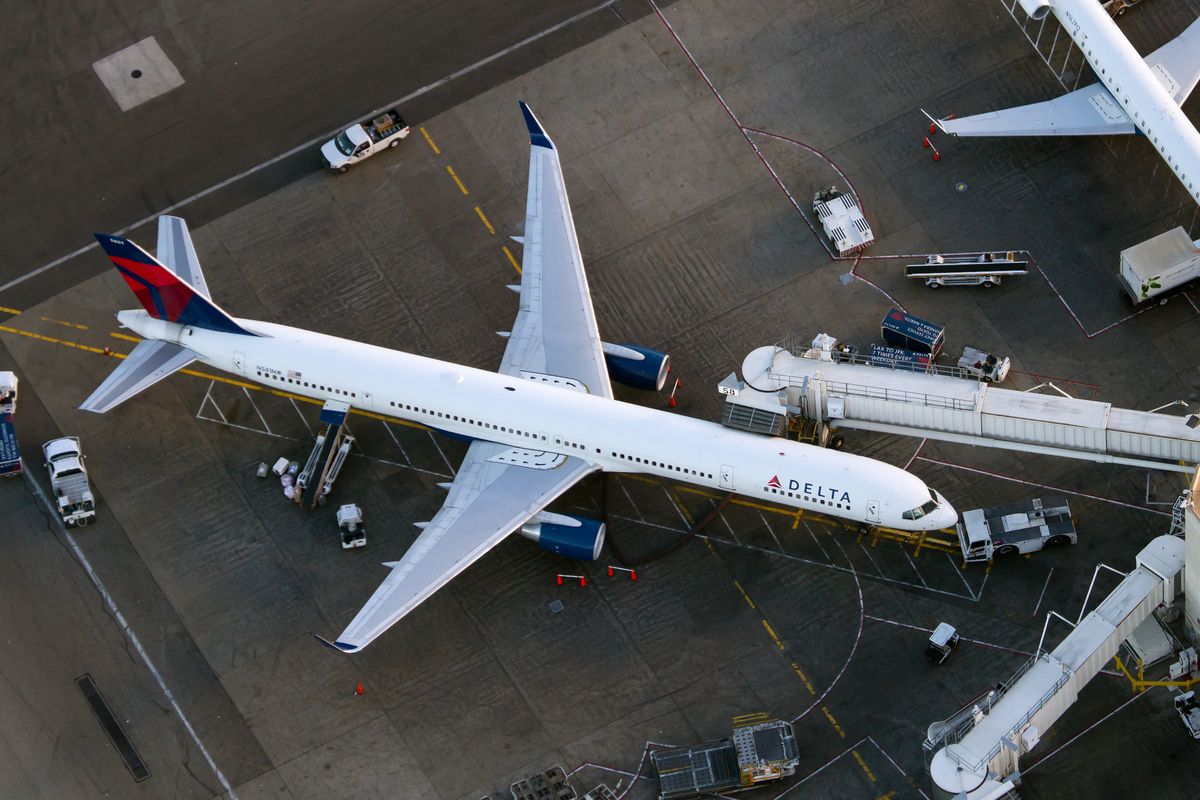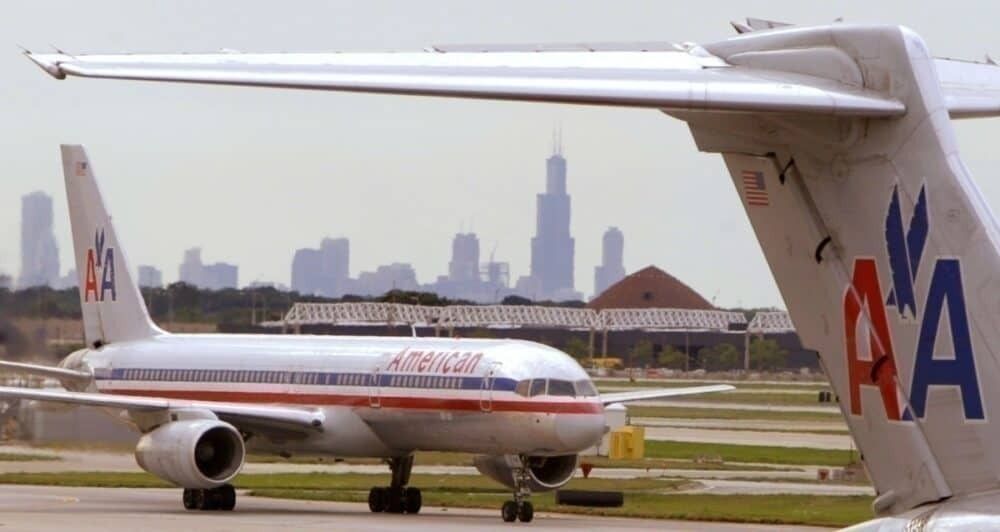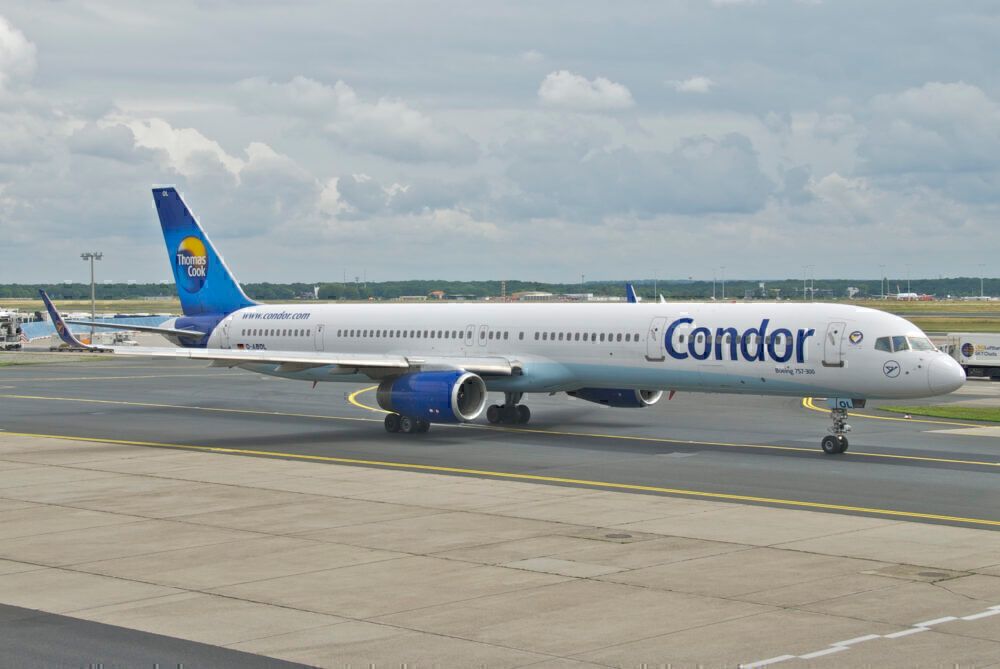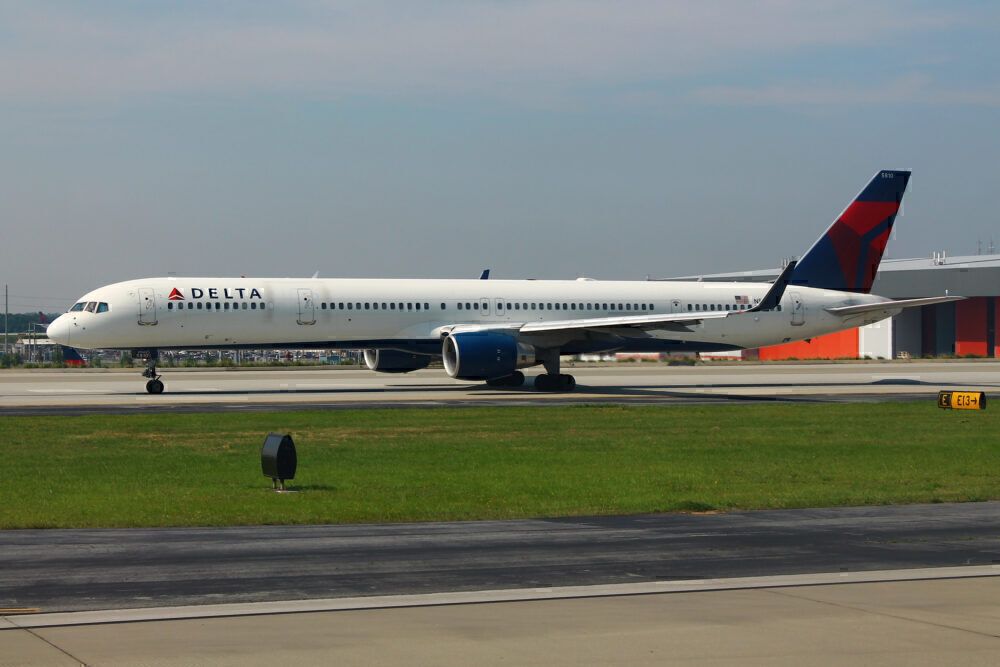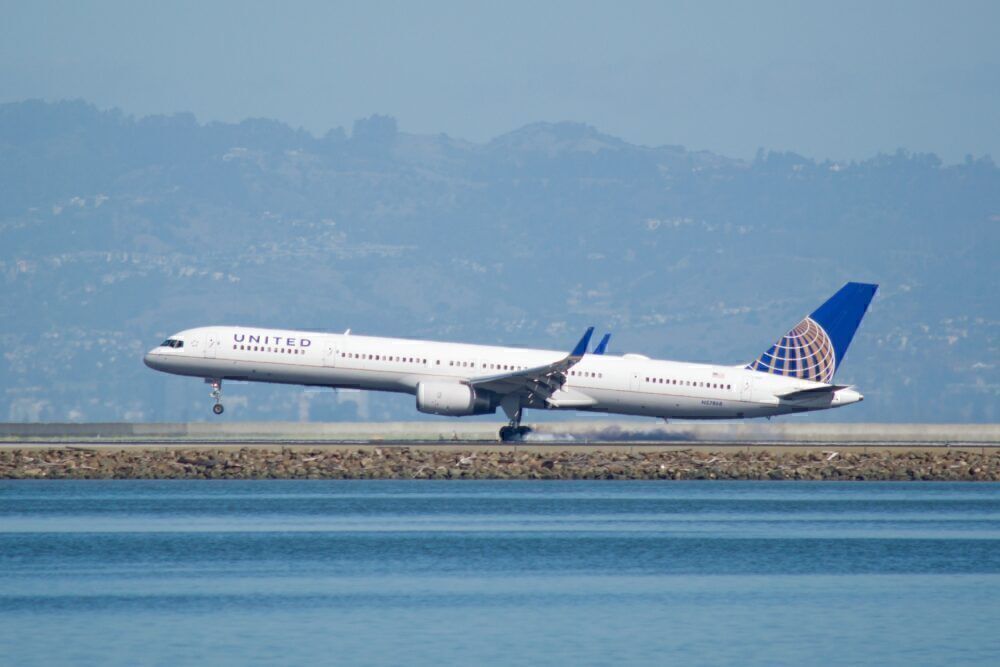The narrowbody 757 has been a great success for Boeing. Across all variants, the planemaker sold 1,049 aircraft. And it remains popular with many airlines today, never really having a true replacement for its size and range. It's not all been a success story, though. One of the two variants launched by Boeing was not at all popular, with just 55 sales. Read on to find out what went wrong.
The two 757 variants
The Boeing 757 was designed as a more efficient, twin-engine successor to the popular Boeing 727. It first flew in 1982 and entered service with Eastern Air Lines in January 1983. This first variant was the 757-200. It offered a typical two-class capacity of 200 passengers (and a maximum of 239) and a maximum range of 7,250 kilometers.
The larger 757-300 entered service in 1999. This stretched the fuselage by just over seven meters (and at 54.5 meters, it is still the longest narrowbody twinjet produced). Typical capacity increased to a massive 254 (with a maximum of 295), but the range took a hit down to 6,295 kilometers.
The 757-300 launched with European charter airline Condor, highlighting the intended market; high capacity use on leisure routes. Condor ordered it as a replacement for its DC-10s, but it could also be considered as a replacement for aging 767-200 aircraft.
In total, Boeing built and delivered 1049 757 aircraft (including freighter models). The 757-300 however saw only a fraction of these sales, with total family sales as follows (according to Boeing sales data):
- 757-200: 913 aircraft
- 757-200M (convertible version): 1 aircraft
- 757-200PF (freighter version): 80 aircraft
- 757-300: 55 aircraft
Was the 757-300 just too long?
Boeing's bet that the larger size would be popular just didn't work out. Apart from a few niche areas, airlines were just not interested in the extra capacity, given the reduction in range (and higher operating cost).
It was useful for high-capacity routes and for operating at smaller airports (at that capacity, opting for the 767 was, of course, possible). This is evident from its take-up by charter airlines such as Condor and Thomas Cook. Schedules airlines struggled, though.
This was not just an economics and route decision for airlines. The simple fact was that the long single-aisle concept just didn't work for many airlines. With single door access at gates, turnarounds were longer with aisle congestion. And passengers were less satisfied with the longer aisle and slower boarding and service as a result.
Timing played a major part too
It was not just the specifications that let the 757-300 down. It was also a very late release by Boeing, entering service some 16 years after the 757-200. Perhaps if the 757-300 had been offered at launch, things would have worked out differently.
Many airlines that would have been interested were already operating the 757-200. And by that time, there was a lot more choice in the large narrowbody market. Airbus was offering the A321 and Boeing the high capacity variants of the 737 Next Generation series.
And don't forget the events of 11th September 2001. This had a significant effect on all aircraft sales, and the 757-300 had only been in service for two years at that point. Sales dried up and production ended in 2004.
Stay informed: Sign up for our daily and weekly aviation news digests
Perhaps it was ahead of its time
It's clear that with just 55 sales that the 757-300 was not popular. In fact, it is the second-lowest sales for any Boeing narrowbody, other than the short-lived 737-100 initial variant.
But that is not the whole story. It has gone on to be very popular with the airlines that operate it, as demonstrated by the fact that so many still remain in service today. Launch customer Condor still has 13 aircraft. And Delta Air Lines and United Airlines both operate large fleets, although many have been parked in 2020.
And the high capacity, high range narrowbody model remains popular. The new Airbus A321XLR will offer only a slightly smaller capacity, but with a much-improved range, and has sold well ahead of its launch.
Boeing has not missed this, and (having shelved plans for the 797) is even considered re-launching the 757. Simple Flying considered this recently, perhaps as a 757X or 757 MAX version. This would be based on the popular 757, but with capacity more in the area of the 757-300. Of course, engine and technology improvements would address the range issues and also improve efficiency.
Would you like to share any thoughts or experiences of the 757-300? Would it have been more successful if it launched earlier or later? Let us know your thoughts in the comments.

